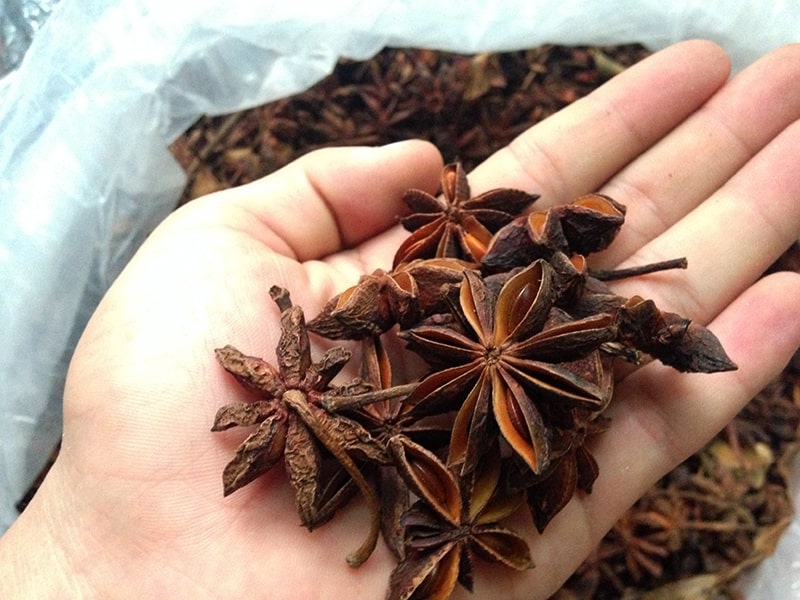I. Global Star Anise Market
The global star anise market has seen significant growth in recent years, driven by increasing demand in the food and pharmaceutical industries. Star anise is widely used in food preparation, especially in Asian cuisine and traditional medicinal products. According to market research data:
- Star Anise Market Insights: The star anise market is experiencing significant growth, with a value of 100 billion USD in 2023. It is projected that this figure will increase to 148 billion USD by 2030, with a compound annual growth rate (CAGR) of 5.95% during the forecast period from 2024 to 2030.
- Market Demand: The rising demand from the food, pharmaceutical, and fragrance industries has contributed to this growth. Star anise is favored in Asian cuisine and is extensively used in functional food products..
II. Top Importing Countries
1. Currently, the countries importing the most star anise include:
– United States: The demand for star anise in the U.S. has increased in recent years, primarily due to its popularity in cuisine and functional foods. Specific information includes:
a. Market Revenue: Revenue from star anise in the U.S. was around $140 million in 2021, with an expected annual growth rate of 6%-8% during the period from 2024 to 2027.
b. Culinary Growth: Star anise is widely used in Asian dishes, contributing to the growing demand in restaurants and processed foods.
c. Functional Food Products: Star anise is also used in functional foods due to its health benefits, in a market expected to reach approximately $300 billion by 2025.
– Japan: In Japan, star anise is used in traditional dishes such as Japanese curry and stews.
a. Imports: Japan imports about 600-800 tons of star anise annually, primarily from China and Vietnam
b. Increasing Demand: The demand for star anise is rising due to the popularity of Asian cuisine and natural spices.
– India: Star anise is both produced domestically and imported. In India, star anise is grown locally as well as imported:
a. Domestic Production: India cultivates star anise over an area of about 20,000 hectares, mainly in Jammu and Kashmir, Himachal Pradesh, and Uttarakhand.
b. Imports: The country imports around 3,000-5,000 tons of star anise each year, mainly from China and Vietnam.
c. Demand: Star anise is commonly used in Indian cuisine, boosting demand for both domestic production and imports.

III. Leading Exporting Countries
Vietnam is one of the largest exporters of star anise in the world, renowned for its distinctive flavor and high quality. Additionally, other major exporting countries include China and India.
- Vietnam: Exports about 15,000-20,000 tons of star anise annually, mainly to the U.S., EU, and Asia. Vietnamese star anise is known for its flavor and high quality..
2. China: Exports around 10,000 tons each year, serving both domestic and international markets.
3. India: Exports approximately 5,000-7,000 tons annually, catering to regional and international demand.
IV. Major Cultivation Areas
Vietnam, especially the Northern and Central Highlands, is known for being the largest star anise cultivation region. The climate and soil conditions here are very suitable for the growth of star anise.
1. Northern and Central Regions: Provinces such as Cao Bang, Lang Son, Nghe An, Ha Tinh, and Quang Binh have a total cultivation area of over 40,000 hectares, with very suitable climate and soil conditions.
2. Central Highlands: Provinces such as Dak Lak, Dak Nong, and Lam Dong are estimated to cultivate about 5,000-7,000 hectares.
This region has a tropical monsoon climate and fertile red basalt soil, ideal for star anise cultivation.

V. Applications of Star Anise in Various Industries
Star anise is not only used in culinary applications but also has many other uses:
1. Pharmaceutical Industry:
– Research documents on the antibacterial and antiviral effects of star anise: “Antimicrobial Activity of Star Anise (Illicium verum) and Its Main Compounds.”
– Medical applications of star anise can be referenced in books such as “The Herbal Medicine-Maker’s Handbook.”
2. Fragrance Industry:
– Extracts from star anise are used in perfumes, with information available in fragrance industry literature like “Perfume: The Art and Science of Scent.”
3. Functional Food Industry:
– Studies on beneficial compounds in star anise and their applications in functional foods can be found in medical or nutrition journals such as the “Journal of Nutrition.”

VI. Why DACE Farm’s Star Anise is Always Reliable?
1. Our farm
DACE owns over 5,000 hectares of USDA-certified organic star anise. We prioritize sustainable development and the protection of forests and biodiversity.
2. Supply Capacity
With large areas cultivated, DACE can supply various products such as cinnamon, star anise, ginger, and turmeric, tailored to customer requirements.
DACE Farm is always eager to support customers from challenging markets like the EU, U.S., and Japan. Please contact us for more information about our products and services!


